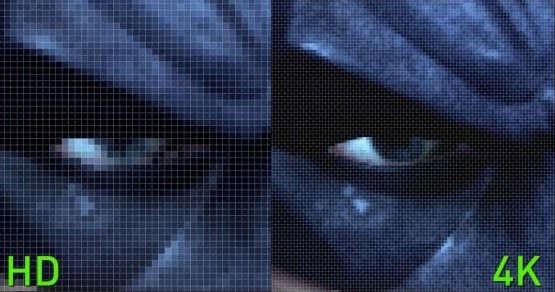Ziklitschli
New member
Well, yes. That is the entire point of upgrading to a 2080Ti. To play the latest and greatest games. If I wanted to stick to old games I wouldn't have upgraded.
I don't need any kind of SSAA to cut performance by 30% to 50% at 4k for minimum visual differences that the more efficient AA methods offer.
You're going to tell me downloading NVinspector to turn on an ancient, performing killing AA method is going to be a better option?Maybe if I dropped all the graphic settings down to console peasant levels, but I'm not KAC.

Ok then, why not disable downgrades like camera motion blur and depth of field (which can be really blury with TAAs heh) or CA (which actualy has the perf cost heh) to be able to turn on sgssaa x2. Or, example Deus Ex HR, in that game the super high end contact hardening shadows option made the shadow draw only like 10m or sth and disabling it would have not only improved IQ in motion but also gave enough headroom for x1.5 at least (not saying sg because msaa itself is insanely expensive in that game).
In modern games half the graphics menu is to be disabled anyway, super vignettes, lens dirts, chromatic vomit etc.
Yes I'm telling you that 5 sec download and 3 seconds unrar can bring you much better IQ in some games, not all ofc as that depends on engine, compatibility flag and nature of the graphics presented ofc but still, why the f not. It's not as relevant as it once was if you're not into replaying older games (where you could actualy downsample from 8k and maybe even add sth on top, Dead Space? anyway) but in one game in few you'll get vastly superior IQ to the TAA and sharpen mix. Unless ofc you believe in miracles like a technique that is almost free performance wise being remotly comparable to sth that cuts 30% to 50% of perf.
Again, it's not ancient, it's just not for the masses and out of fashion atm. The new ones on the other hand are patchworks for the worst disadvantage of deffered renders - incompability with proper AA techniques.
Any solution in X game that elliminates jaggies and shimmering that maintains texture clarity at 4k. Sometimes that would be SMAA 2TX, sometimes TXAA or TAA with a slight sharpening filter.
Right now I'm playing Red Dead Redemption 2 with High settings at 4k, TAA and Nvidia's freestyle sharpening tool (which is now just as good as Radeon Image Sharpening) to offset any blurriness.
Yes TAA is good at resolving aliasing, the price is as I said blur and ghosting that you have to then sharpen. No sharpening is artifact free, and that filter, as I've just read, costs performance, a little but still sounds a bit backwards heh.
The end results is a fantastic picture quality with zero jaggies, zero shimmering, and perfect pixel texture quality as if no AA was used.
On 65' 4k? How far do you sit from that screen?
In Wildlands, with TAA and slightest sharpen (like 10% or sth when the defaut was I think 50 or sth) the drop in quality from sharpening was visible on 24" qhd screen, 40" full hd screen supersampled x4 and 43" 4k screen, sitting slightly below 2m away from the TVs (recommended distance) and over 1m from the monitor (too far). Granted, this tool might be much superior but again, no miracles.
The ingame 2x SSAA option was perfect enough. There's nothing else that would make it "insanely" better. Highest setting at 4k, no shimmering, no jaggies, razor sharp texture clarity. Don't need any higher levels of AA or different AA methods to make Serious Sam 3 look any better on my 65" 4k screen.
That's the only "old" game I've played on my 2080Ti. The newer games just don't have the performance to spare for AA that cuts performance by 30% or more, and frankly, the modern AA options do just fine.
You must have had msaa turned on as well in the menu, 2x2 alone will not eliminate jaggies to perfection like you describe it on 65" 4k, it has the pixel pitch of, simplest to describe, 32.5" 1080p screen.
Ofc, sitting far enough will eliminate all aliasing in the world heh. Or, you're just not that much sensitive to IQ, or particularly to aliasing, shimmer etc. I mean, not long ago you (at least afair it was you) were claiming that DLSS is almost (90% or sth) like native 4k and here we have this guys claiming that even this nV sharpen filter beats it at 0,7 of 4k res, even in Metro:
https://www.techspot.com/review/1903-dlss-vs-freestyle-vs-ris/
Not saying this to fire you up, just maybe that's it and good for you if so, I'd be a happier and wealthier man like that, though playing with a worse IQ heh. Anyway, why not just try and have another tool at your disposal, not every new game leaves no headroom with 2080TI at 4k.


 .
.  At that distance there is still much more detail to see as well (resolution clarity).
At that distance there is still much more detail to see as well (resolution clarity).